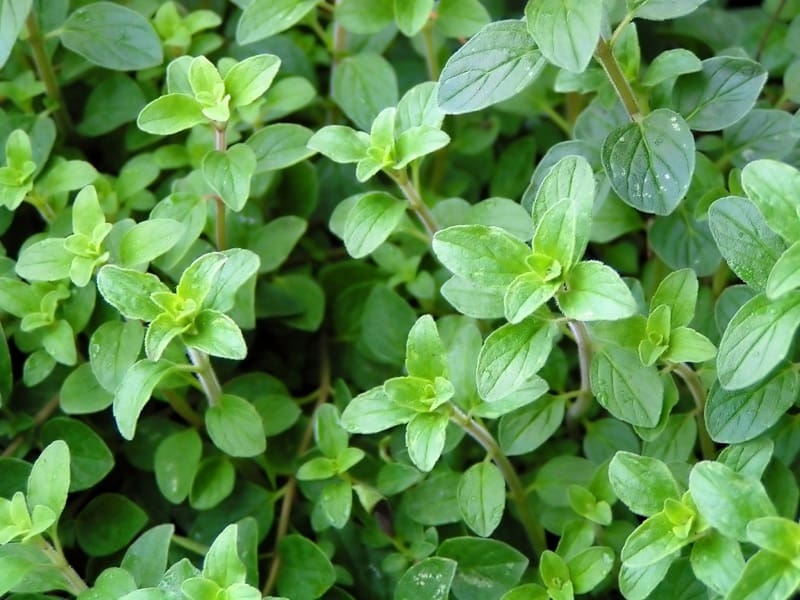
Oregano, or Origanum vulgare, is a popular herb used in many dishes. These plants belong to the mint family, Lamiaceae, and have small, green, spade-like leaves and purple flowers. They are woody perennials native to the Mediterranean region, and grow up to 31 inches tall. Because their area of origin is relatively dry, it can be easy to accidentally overwater your oregano plants.
Overwatered Oregano: What are the signs?
- The leaves turn yellow and fall off.
- The leaves become dark or black-colored.
- The plant develops a fuzzy mildew.
- Signs of edema, such as blisters and lesions, start to surface on the leaves.
- The herbs’ growth becomes stunted.
- The stems and roots break off easily.
- The roots rot, becoming dark and slimy.
- The plants do not perk up after being watered.
How to avoid overwatering?
To avoid overwatering, plant your herbs in groups according to their watering needs. This will ensure that plants that like to remain dry are not overwatered. Ideally, you should water plants less frequently and with a good, deep soaking, rather than frequently with a light soaking. This will encourage good root growth that the herbs need to survive.
See to it that your oregano plants have good drainage, especially those that are in pots. Add straw, wood chips and other similar organic additives to the soil before planting. Check the soil before watering, and check for plants that are beginning to wilt or droop.
Test the soil by inserting your finger an inch or two near the root area. If the soil is dry, water the plants. Water only the root area, to prevent diseases exacerbated by excess moisture. However, during dry weather, give the plants some misting and remove any wilted plant parts.
Oregano plant care
Oregano plants thrive with minimal maintenance and prefer light and well-draining soil, especially sandy loam potting mix. There are at least 20 varieties, and most produce pleasant-tasting foliage if placed in a room where they are exposed to full sunlight. However, the Golden Oregano variety prefers partial shade.
Compared with other herbs, oregano plants are more resilient when it comes to watering needs. Ideally, you should water more if the soil feels dry. However, be careful not to overwater.
Oregano prefers warm temperatures; during the day they prefer a temperature between 65 and 70 degrees Fahrenheit. They are not cold-hardy and do not like temperatures below around 54 degrees Fahrenheit.
These plants do not like too much water, and this includes moisture through humidity. If placed in a room with high humidity, the plants’ transpiration rate will be lowered and there will be a risk of leaf damage.
Oregano plants do not need regular fertilizing, but indoor plants may be given some during the growing period. Dilute the fertilizer by half before adding it to the plant’s soil; you may also opt to use compost.
Allow the plants to grow about four inches tall before trimming lightly to encourage a bushier shape. Trim regularly to avoid legginess and to allow new branches to grow. It is better to water thoroughly, but not often. If kept in containers, water until the water flows out of the pot’s drainage holes. Thin out plants that are three or four years old in the early spring; they will easily grow back because they are self-seeding.
These plants can cross-pollinate, meaning that two separate species can combine to form a new hybrid. You can also propagate through seedlings and stem cuttings. Larger varieties can grow to two feet and spread to about 18 inches.
Conclusion
Oregano plants are popular houseplants and herbs that belong to the mint family. Being from a dry region, they do not take well to being overwatered, and a common symptom of this is yellowing leaves that may also turn dark and fall off. Other signs of overwatering include the appearance of blisters and lesions on the leaves, rotting roots, and stunted plant growth.
Image: istockphoto.com / Karimala